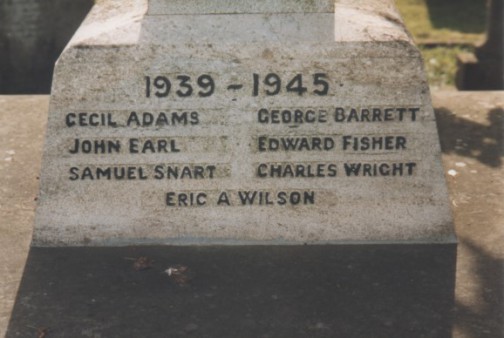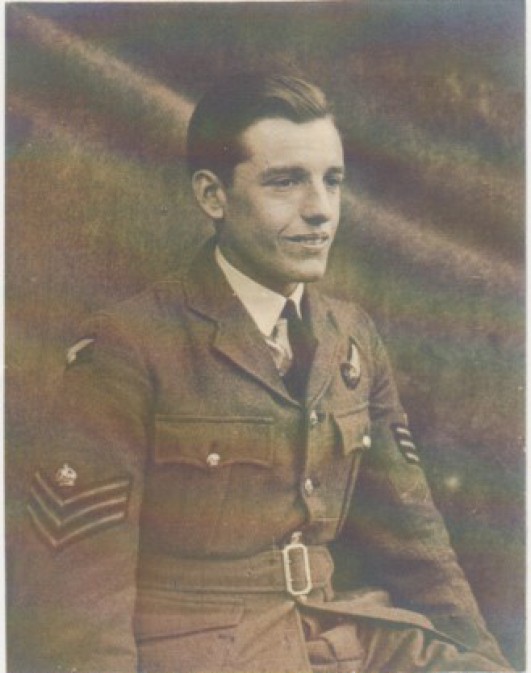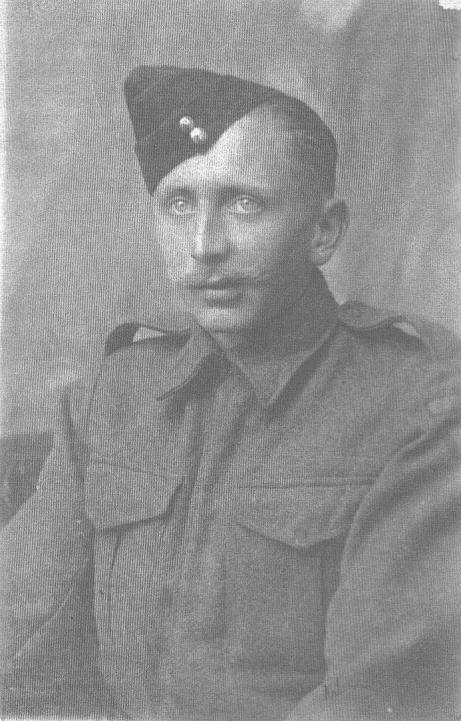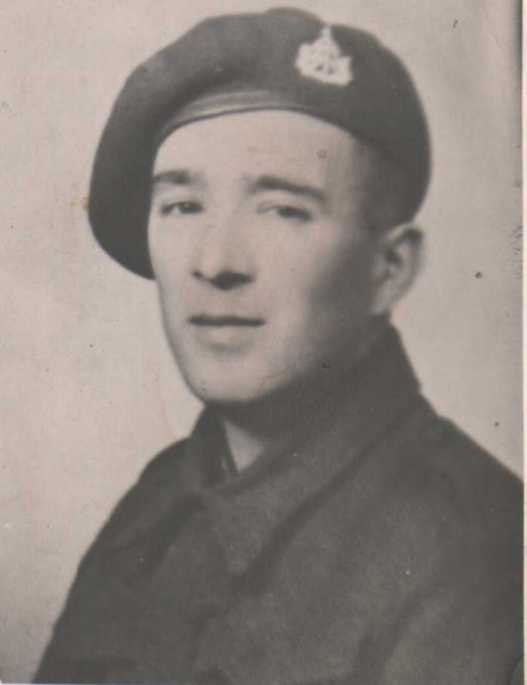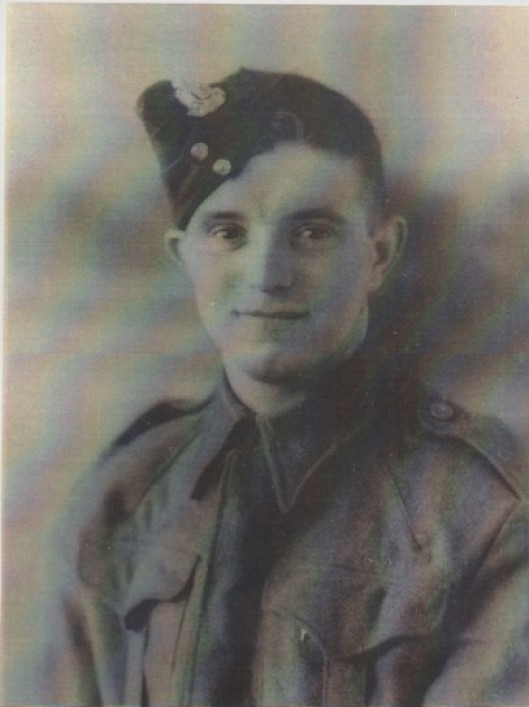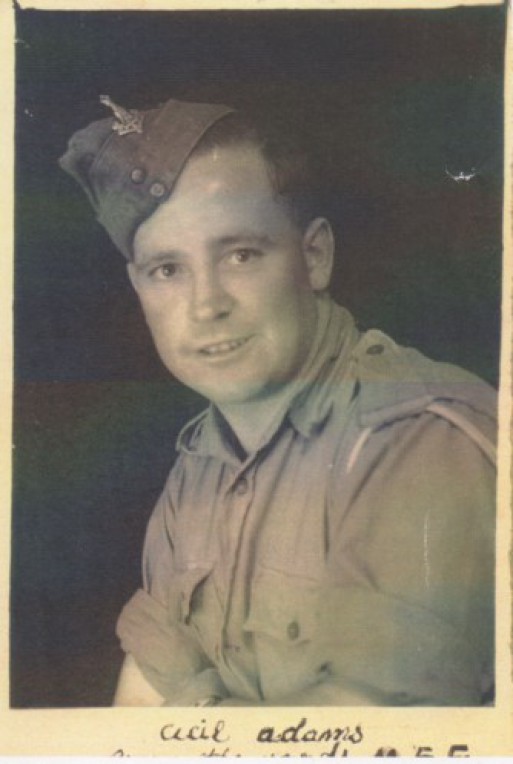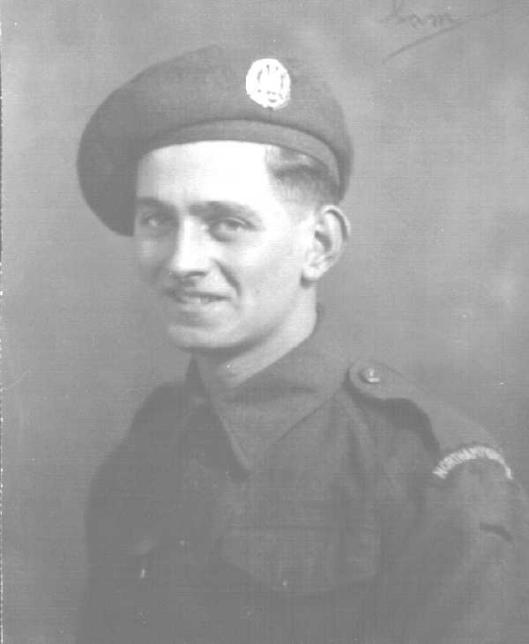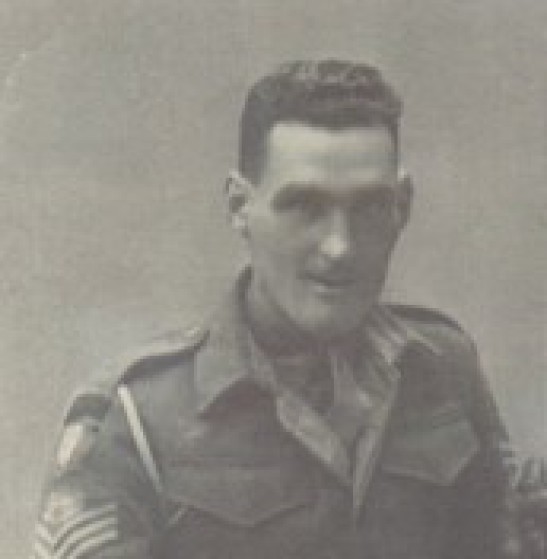V.E.Day 75th Anniversary
75 years ago the country celebrated the end of the Second World War. This page is dedicated to those who served and those who died from Newborough during that long conflict.
75th Anniversary of Victory in Europe Day
8th May 2020
By Paul Cooper
On the 7th May 1945 the Germany surrendered to the allies which brought an end to the Second World War. The next day was designated as VE Day. A time for much rejoicing and celebration, the war that had raged for 6 long years was at a close in Europe. It was not over though as fighting was still going on in the Far East. For soldiers like my grandfather it would be many months yet before they could come home. In this article I have concentrated on those from the village who made the ultimate sacrifice. All except one, Eric Wilson, killed in the Europe campaign. But in this day of celebration it should also be a day of reflection. For those who made the ultimate sacrifice but also for those who survived. Many of these hero’s carried the scars of war both mentally and physically, often for the rest of their lives. A generation affected from its wartime experiences and just got on with life. I include below the names of the people who lived in the village at the time and who served with distinction. I apologise if I have missed anyone from the list and will be more than pleased to add anyone to the list if I have (The names in italics denotes Killed in Action);
|
Cecil Adams |
D Adams |
Fred Adams |
|
George Barrett |
Ted Browning |
Bill Dudley |
|
John Earl |
D Eve |
Edward Fisher |
|
R Frisbey |
T Gardener |
Jim Giddens |
|
John Giddens |
A Hale |
K Hudson |
|
S Pell |
Harry Reeve |
A Sherod |
|
Sam Snart |
Ron Sutton |
Cyril Thompson |
|
L Ward |
S Ward |
Eric Wilson |
|
Charles Wright |
M Wright |
Ken Goodliffe |
George Arthur Barrett
George was born in Peterborough on 1st July 1924. He was the only son of John Henry and Anne Elizabeth Barrett. He lived on Bridgehill Road with his parents and sister, attended Newborough School, before leaving in 1938 aged 14 to work at Bungalow Farm on Werrington Bridge Road. George joined the RAF on 13th February 1942. He initially trained as a wireless operator but was so desperate to fly that he transferred as an air gunner. Being posted to 166 Squadron based at Kirmington, now Humberside Airport, he flew his first mission on 28th October 1944. He flew a further 20 missions until his 22nd and last mission on the night of 27th and 28th November. A mission to Freiberg to attack the railways, his aircraft was shot down by an anti-aircraft battery on it approach to the city. Theirs was the only aircraft lost that night. His body was not recovered until an investigation in 1947 discovered a mass grave with 5 other members of his crew. He was laid to rest in the Durnbach War Cemetery on October 9th 1948. He shares a grave there still united with his crew. George was only 20 years old.
Edward Fisher
Edward was born on 23rd October 1919, eldest son of Fred and Emily Fisher. Edward had a younger sister, Mabel. The Fisher family lived in a cottage, which was one of four that stood on a plot of land opposite Caves farm on Thorney Road, near to Peakirk. Originally the cottages were built as shepherds cottages. Edward was a keen cyclist and an amateur artist.
He left school at the age of 14 and began employment at Jellings Builders as a carpenter. This gave him the nickname “Chippy” Edward joined number 8, Royal Marine Commandos in September 1940. After training programmes in Devon, Wales, Scotland and the Isle of Wight before setting sail for the invasion of Sicily. By this time Edward was transferred to 41 RM Commando and went in the first wave of troops in the invasion. In September 1943 Edwards Commando were involved with the Salerno landings. After several days of hard fighting Edward was killed on 16th September. He was a company runner and the injuries he sustained were conducive to have stepped on a mine. After initially being buried by a nearby walnut tree he was later moved to the Salerno Beach Head Cemetery. Coincidently Edward is buried close to another Newborough Man Cecil Adam. At home they lived 100yards apart and so they are in death. Edward was 24 years old
Charles Wright
Charles Wright was born on the 21st June 1915. He was the third son of John William and Sarah Wright. He had three other brothers Arthur, Frank and William. There was also a sister named Lillian. Charles left school at the age of 14 and worked on the land for a while. On August 4th 1934 age 19, Charles married his childhood sweetheart Edna Wright. It is by sheer coincidence that Edna's maiden name was also Wright. Soon after their marriage they moved to Newborough and shared a house in School Road with a Mrs Green. Charles was called up for military service on 19th March 1942, joining the 1st Reconnaissance Regiment. The summer months of 1943 saw Charles in action in North Africa before moving to Italy in December. After taking part in the Salerno landings Charles Regt moved on to Anzio in January 1944. The stalemate at Anzio continued and on the night of the 9th/10th March after a sentry duty Charles was killed by a mortar shell which scored a direct hit on his slit trench. He was 29 years old. He left behind a widow and three surviving children. He is buried in the Beachhead Cemetery at Anzio
Eric Arthur Wilson
Eric was born during 1919 the exact date of birth is unknown. He was the second son to Florence Susan Wilson and Charles Edward Wilson and lived at Manor Farm, Postland, Crowland. Eric attended Crowland South View School and Postland Road School. Sometime around 1938 the family moved to a cottage at the entrance to Hill Farm. Before being called up in 1939 he worked for Jackson-Williams Farm in Panks Drove. On 15th December 1939 he joined the 1st Bn Cambridgeshire Regiment. After training in England and Scotland the regiment took up mainly coastal defence duties along the East Coast. Eric left the UK from Liverpool in October1941 on-route to the far East. They eventually reached Bombay on 27th December 1942. Shortly after they set sail again for Singapore arriving on 29th January. Rapidly disembarking the regiment was soon in action against the invading Japanese. They fought with distinction before the island was surrendered to the Japanese on 14th February. Eric was now a prisoner of war. After a spell at the infamous Changi prison he was sent to Thailand to work on the Burma Railway. Eric succumbed to Dysentery and Malaria on 21st June 1943 aged 23 and is buried in the Kanchanaburi War Cemetery Thailand
Cecil Robert Adams
Cecil was born on the 18th July 1918, the youngest child of John and Mary Elizabeth Adams. Cecil, as were all the Adams children, was born at Long Meadow Farm, Arches Road, Peakirk. The road is now known as Glinton Road. The Long Meadow Farmhouse has since been demolished. Cecil was a good sportsman excelling in both football and cricket. "Duke" as he was nicknamed, was a member of the Newborough Cricket Club from the early 1930's. The cricket ground was in the field behind the Royal Oak pub which is parents took over the tenancy in 1930. Cecil left school at 14 and joined a group of labourers going from farm to farm for work. He was friends with Edward Fisher who lived just up the Road. Cecil joined the Suffolk Regiment on 15th July 1939, later transferred to the 5th Green Howards. In January 1940 he and his regiment was posted to France. After fighting some heroic rear-guard actions Cecil and what remained of his regiment escaped from France via Dunkirk on the night of 2nd/3rd June 1940. The rest of 1940 the regiment returned to full strength, took up coastal defence duties and retrained. April 1941 saw Cecil and his regiment posted to the Middle East. The following June (1942) Cecil had another miraculous escape. One platoon was sent out on patrol. Whilst out the Germans attacked the regimental positions. After fighting to the last round of ammunition the regiment ceased to exist; either, killed, wounded or captured. The only survivors were a handful of men who managed to escape or the patrol that was sent out before the attack. Cecil was certainly in one of these groups.
Following this battle the survivors were sent back home. Cecil was transferred to the Catering Corps and then to the Military Police. Sometime between March and July Cecil was sent back to the Middle East in preparation for the invasion of Sicily. On 3rd September the invasion of mainland Italy commenced. Cecil, as an MP, was certainly involved in this as he was killed on that day in Italy. It has been determined that he was killed by a snipers bullet. Initially he was buried at the civilian cemetery near Reggio Di Calabria, before being moved to the Salerno Beach Head Cemetery, buried near his friend from thee village Edward Fisher. Cecil was 25 years old.
Samuel Frederick Snart
Samuel Frederick Snart was born on February 26th 1926 in Peterborough. He was the only child of Gladys Faith Snart. Gladys and Sam, Sam’s Auntie Tru and Cousin Betty all lived with his Grandfather Joe Snart. They lived in “Greystones”, one of the pair of semi-detached cottages on the left-hand side of Guntons Road as you leave the village towards Peterborough. After attending Newborough School, where he was described as a quiet, shy but clever pupil, Sam left and went to work at English Bros in East Station Road Peterborough as a yard worker. Sam was called up for the army on 16th March 1944 (17 days after his 18th birthday) when he joined the General Service Corps before being transferred to the Northamptonshire Regiment. Due to the high casualties sustained by the Cameroonian Rifles during January and February 1945 Sam was transferred to them as a replacement. Sam was only with the regiment for two weeks before he was killed, 11 days after his 19th birthday on 9th March 1945. It is not known exactly how Sam was killed. In a letter home from his commanding officer, he described how Sam died bravely and well. Piecing together the regimental war diary it is quite likely that Sam died in an attack by D Company on a strongly defended German position in farm buildings on the early morning of the 9th March at Alpon. He is buried in the Reichswald Forest War Cemetery.
John William Earl
John was born in August 1914. He was the son of John William and Sarah Margaret Earl. John and Sarah were married in 1910 at Whaplode, Lincolnshire. He was 43 and a widow, Sarah was 21. By all accounts John was a bit of a tearaway and a rebel at school. He was often in trouble and causing mischief. John joined the army in 1934. By all accounts it was the best thing for him. Before the outbreak of WW2 John, now a professional soldier had served in India and had been promoted to sergeant. Accounts from people who knew him described him as a true professional and unlike most sergeants he was well liked. John was in the 53rd Heavy Regiment RA. These were the long range guns used to bombard enemy positions. Much of his first part of the war was on coastal defence duties, training and re-equipping with American 155mm howitzers. These were much more mobile than the WW1 equipment they were previously issued with.
Whilst at home John married Peggy Carpenter sometime between October and December 1941 at Lewisham, London. John and Peggy came home to Newborough on leave shortly after they were married. It was the last time he was to see Newborough. In 1943 Peggy gave birth to their daughter Christina (Tina) Earl.
John and his regiment was shipped to France on the 18th June 1944 to scenes of devastation. They were soon in action supporting the breakout from Caen. John and his battery spent the next nine months supporting numerous attacks and advances made across Northern Europe. By April 1945 the regiment was not so active. Often the vehicles were used to support the Royal Engineers in clearing up war debris. On one morning of the 19th April 1945 John and his team were assigned to help the RA to clear away German Shuh mines. The engineers had lifted them and made them safe. John’s team’s role was to load them into the Lorries and take them away to be destroyed. Whilst John was lifting one of these mines into the lorry it detonated. He was killed instantly. He was 30 years old, left a widow and a 2 year old daughter. Peggy later remarried in 1945.
Note from the author;
I am currently updating the series of books I originally wrote in the year 2000 as more information has been found and the John Earl book is now nearly complete. I hope to have these available later in the year.
I hope you enjoy reading them.
If anyone has any information that you think would be of interest then please contact me at the email address below;
Many thanks
Paul Cooper


